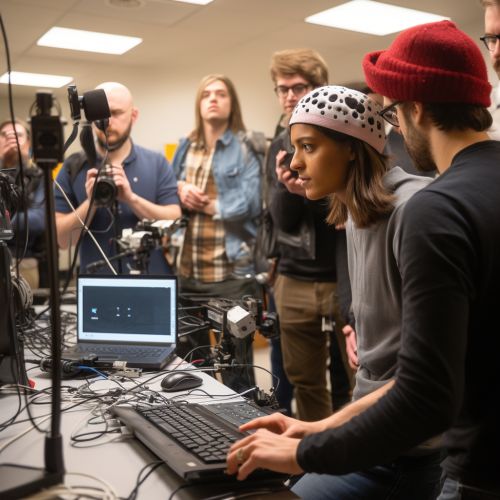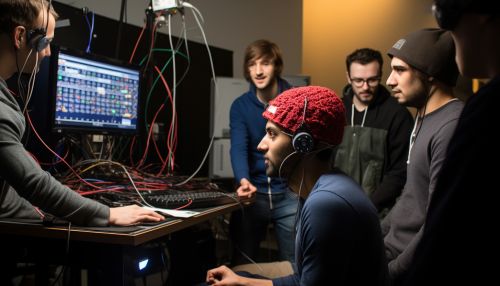Psycholinguistics
Introduction
Psycholinguistics is a branch of cognitive psychology that studies how individuals comprehend, produce and acquire language. This interdisciplinary field combines psychology, linguistics, philosophy, computer science, and neuroscience to understand the cognitive processes behind language use and acquisition.
History of Psycholinguistics
The field of psycholinguistics emerged in the mid-20th century, with the publication of Noam Chomsky's "Syntactic Structures" in 1957 often cited as a significant turning point. Chomsky's work challenged the behaviorist view of language learning, proposing instead that humans possess an innate ability for language acquisition.
Theoretical Approaches
There are several theoretical approaches within psycholinguistics, including the generative, cognitive, and connectionist approaches.
Generative Approach
The generative approach, pioneered by Chomsky, posits that humans have an innate ability to understand and produce language. This approach focuses on the structure of language and how it is represented in the mind.
Cognitive Approach
The cognitive approach to psycholinguistics emphasizes the role of mental processes in language comprehension and production. This approach often involves the study of memory, attention, and problem-solving in relation to language use.
Connectionist Approach
The connectionist approach, also known as the neural network approach, models language processes as networks of simple units. This approach often uses computer simulations to model language processes.
Language Acquisition
Language acquisition is a central topic in psycholinguistics. Researchers in this field study how children learn their first language (L1) and how adults learn a second language (L2).
First Language Acquisition
First language acquisition begins in infancy and involves several stages, including babbling, one-word utterances, two-word utterances, and complex sentences. Researchers study these stages to understand the cognitive processes involved in language learning.
Second Language Acquisition
Second language acquisition involves different cognitive processes than first language acquisition. Researchers in this field study how adults learn a new language, including the role of the first language in second language learning.
Language Processing
Language processing refers to the cognitive processes involved in understanding and producing language. This includes processes such as word recognition, sentence comprehension, and speech production.
Word Recognition
Word recognition is the process of identifying a word and accessing its meaning. This process involves several stages, including visual or auditory perception, lexical access, and semantic integration.
Sentence Comprehension
Sentence comprehension involves understanding the meaning of a sentence. This process involves syntactic parsing, semantic interpretation, and pragmatic understanding.
Speech Production
Speech production is the process of formulating and articulating speech. This process involves several stages, including conceptualization, formulation, articulation, and self-monitoring.
Neurolinguistics
Neurolinguistics is a subfield of psycholinguistics that studies the neural mechanisms underlying language processing. This field often involves the use of neuroimaging techniques, such as fMRI and EEG, to study brain activity during language tasks.
Conclusion
Psycholinguistics is a diverse and interdisciplinary field that studies the cognitive processes involved in language use and acquisition. By combining insights from psychology, linguistics, philosophy, computer science, and neuroscience, psycholinguistics provides a comprehensive understanding of how humans understand, produce, and learn language.


